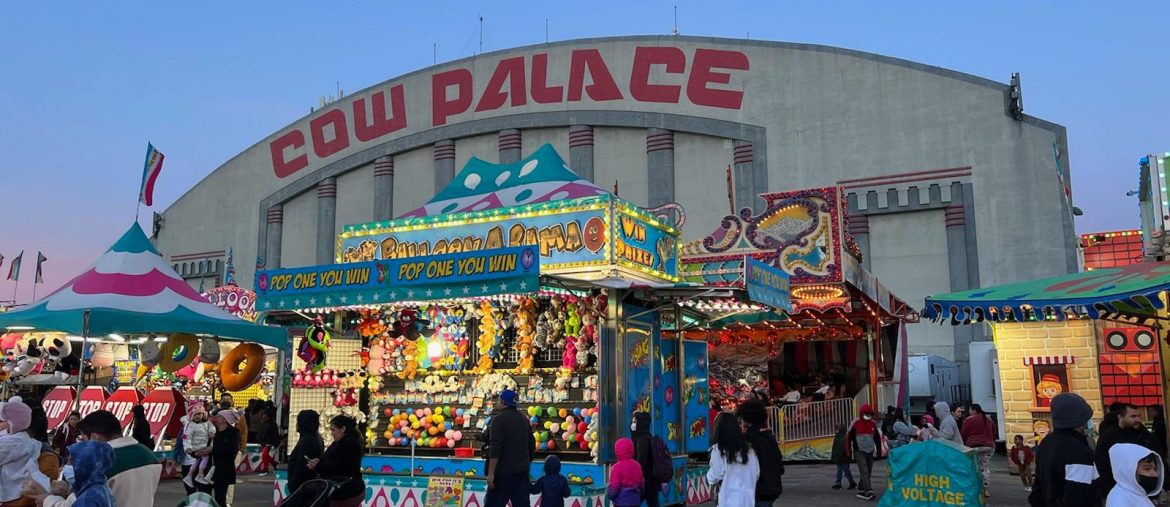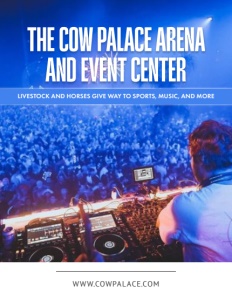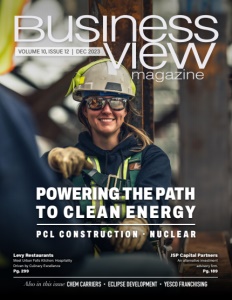The Cow Palace
Livestock and horses give way to sports, music, and more
Historic venue seeks to respond to community needs
The Cow Palace Arena and Event Center is located in Daly City, California, in the County of San Mateo just south of the City of San Francisco. It was built in 1941, as a project of the WPA (Works Project Administration), which was part of President Roosevelt’s New Deal agenda designed to put people back to work after the massive unemployment crisis triggered by the Great Depression of the 1930s. Its inspiration came from the Panama-Pacific International Exposition of 1915, whose stated purpose was to celebrate the completion of the Panama Canal, but was widely seen by the citizens of the City by the Bay as an opportunity to showcase its recovery from the 1906 earthquake, which nearly destroyed it.
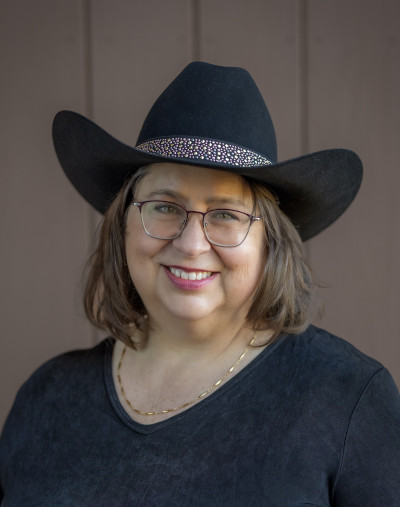
Allison Keaney, CEO
According to Cow Palace CEO, Allison Keaney, one of the most popular attractions during that 1915 Exposition was its livestock pavilion. “So San Francisco said, ‘If that’s such a big deal, let’s have our very own, and let’s have it run all the time,’” she recounts. Thus, the first event held at the brand new arena in April 1941, was the Western Classic Holstein Show, followed by the First Grand National Livestock Expo, Horse Show, and Rodeo the following November. Now known colloquially as the Grand National Rodeo, its first iteration featured a tribute to the late Will Rogers, the well-loved American “cowboy philosopher” and humorist, and was considered a smash success.
Within a month of that first Rodeo, however, the United States was drawn into World War II, and the Cow Palace “immediately became corralled — pun intended — into the war effort and served as a deployment center for the Pacific theater and then, later on, as a machine shop and facility for repairs and maintenance of equipment,” Keaney relates. The ten-day Rodeo and associated events returned on November 15, 1946, and the third Grand National Rodeo took place in 1947. The only other time that the Rodeo wasn’t held was during the recent COVID-19 pandemic. “That’s why we celebrated our 75th Rodeo a couple of weeks ago,” Keaney adds. “But when you do the math, it doesn’t really add up.”
An eclectic offering
By the 1960s, the Cow Palace began drawing the attention of professional sports franchises. The San Francisco Warriors of the National Basketball Association called the arena home from 1962 to 1964 and, again, from 1966 to 1971. Other sports, including ice hockey, indoor football, soccer, tennis, boxing, and wrestling also utilized the venue from time to time. The Cow Palace also became a major musical venue, as well, hosting the Beatles’ first and second American tours in 1964, and ’65, as well as concerts over the years by such well-known artists as the Supremes, Elvis Presley, the Rolling Stones, the Bee Gees, the Jackson 5, the Who, the Grateful Dead, Chicago, Pink Floyd, Santana, KISS, the Cars, Elton John, Prince, U2, Sting, Metallica, and many others. The venue has also hosted two Republican National Conventions (1956, 1964).
Long term tenants of the Cow Palace include the Ringling Bros. Barnum & Bailey Circus, the San Francisco Sport & Boat Show, the Golden Gate Kennel Club Dog Show, Body Art Expo, the Dickens Christmas Fair, Disney on Ice, and of course, the Grand National Rodeo.
“So when you look at the Cow Palace history, it’s certainly agriculture (the Cow Palace is officially the
1-A District Agricultural Association, a state agency of the California Department of Food and Agriculture’s Division of Fairs and Expositions), but it’s also sports, entertainment, music, politics, and community services, which is probably one of the largest and most recent growth areas for us,” says Keaney. “We serve as a facility for bus and ambulance driver training; we have low-to-no-cost clinics for pets; the food bank is here every week; and in cases of disaster or emergency, we are ready and poised to respond to those as well. It’s a ‘Swiss army knife’ of properties and always has been.”
A lean staff runs the show
Like many other event facilities, where there is a natural ebb and flow of activity, the Cow Palace has a skeleton staff that is complemented by many others depending on need. “We have our core administrative and maintenance staffs,” says Keaney. “At our bare minimum, we’re probably about eight full and part-time employees. When we get busy, or when we load in a show, or we get ready to produce our Rodeo, we use a variety of retired annuitants, contracted employees, union house employees, and event staff that work here as well as at other arenas and event venues. So, when we’re in the middle of a show or getting ready for an event, we’re talking somewhere between 75 to 100 — maybe more.”
Regarding its core staff, Keaney says that it is constantly engaged in the activities typical of a busy events center: “We do payroll; we answer phones; there is outreach to clients; there’s outreach to community organizations as we try to help them put on affordable events here. We also deal with big promoters who are going to bring in thousands of people. So the events department is very busy.” (The Cow Palace Arena has 10,100 permanent seats surrounding its 237 X 142-ft. concrete arena floor. With elevated risers, box seats, and decking, the capacity increases to 16,500.)
“Sometimes it’s ground chores,” Keaney continues. “Sometimes it’s walkthroughs; sometimes it’s settling out an event when it’s all over. Maintenance has event-based activities to do preparing the arena for an event – setting up and tearing down. They also have monthly tasks: checking the property, inspecting equipment and making sure it is maintained. We all have baseline tasks to do in order to keep the doors open.”
The Board of Directors has a plan
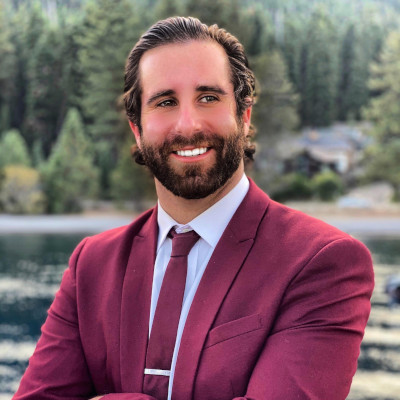
Chris Corgas
Chris Corgas is the Deputy Director of the Community Economic Development Division of the San Francisco Office of Economic and Workforce Development, as well as President of Cow Palace’s eight-member Board of Directors. The Board’s mission is to “provide a well-managed, year-round, multi-use facility for the use and enjoyment of the Bay Area and surrounding communities,” while promoting and showcasing “a variety of entertainment and events to serve the needs and reflect the cultural diversity of the community.”
A few years ago, the Board embarked upon the creation of a strategic plan with a focus on the organization’s future. “The City and County of San Francisco and the County of San Mateo have changed quite a bit since the Cow Palace first opened up,” Corgas says. “And now that we have other arenas in Oakland, San Francisco, and San Jose, as well as smaller venues throughout the Bay area, where do we fit? What do we want our staff to focus on? Where do we see the organization going forward in the future to really maintain that core mission and evolve it in a way that’s going to best serve our nearby communities?”
Keaney echoes the notion. “I would draw a line under Chris’ word ‘evolve,’” she says. “I think it’s a very important word. It’s the key to our longevity and our success – constantly paying attention to our communities and our clientele and evolving as they need us to.
Responding to the community
Corgas provides an example: “The neighborhoods that surround the Cow Palace have a long history of combat sports. Excelsior, which is right up the street from the Cow Palace, has a long history of boxing. We have great non-profits that work nearby that are really committed to youth boxing. One of the things I’ve heard from folks in the community is that they were so excited to have boxing back at the Cow Palace. Also, we were able to get AEW (All Elite) Wrestling back, which was a big draw from the neighborhoods. I’ve been excited about re-energizing that sporting history of the Cow Palace with things that folks in the neighborhood love, at a price point that they can afford.”
Responding to the needs of its diverse communities is absolutely key, and both Corgas and Keaney want to continue focusing on different types of musical and cultural offerings. “We just had the Pupusa Festival, which is a celebration of San Salvadorian culture,” Corgas reports. “We also had Circo Hermanos Caballero at the same time. And it was great to see different portions of the Cow Palace all activated with different things.”
“Not every culture celebrates in the same way,” Keaney adds. “The Cow Palace is a big building and you can do a lot of things in that building, but there are several cultures that would rather celebrate outdoors; and some events prefer and indoor/outdoor model. And that’s not something we’ve typically done; it can be cold, windy, and foggy here in Daly City. But at the right time of year, these things work beautifully.”
The future of an historic venue
Going forward, Corgas says that another overarching goal of his is to ensure that the building is always there, that it’s well-maintained, and that it’s always in use by promoters and event producers. “My dream would be to see us doing us some much needed behind the scenes infrastructure renewal to make the facility incredibly competitive. We are a really strong, mid-size event venue. We have a really good niche that is not easily replicated in the Bay Area. I want to take full advantage of that. There will be a lot of challenges to get us to where we need to be, but I could see the Cow Palace be competitive for some really good acts within the next five to ten years.”
“I would say that our goal for the next five or ten years is to respond the way the community needs us to, building on the foundation we already have and then re-crafting for what needs to happen,” Keaney avers. “So, we want to continue to provide the community what it wants to see and in an affordable way. You can park here, you can get an affordable ticket, you can bring your family to a show, and we want to continue to do those things into the future. We also want to continue to support local businesses and local education. And any time we can dovetail all of those other aspects into everything else we do, we’re going to do it. We’re here to create memories that people talk about. When you tell people you work at the Cow Palace, everybody has a story. We want to make sure that in ten, twenty, thirty years, people are still telling stories about when they came to the Cow Palace.”
“We love our history,” Corgas says in conclusion. “But we’re still very much active in the present, and we’re going to be there in the future. And we’re still making history.”
AT A GLANCE
The Cow Palace Arena and Event Center
WHAT: An historic entertainment venue and home of the Grand National Rodeo
WHERE: Daly City, California
WEBSITE: www.cowpalace.com
PREFERRED VENDORS
Enviro Clean Maintenance LLC
